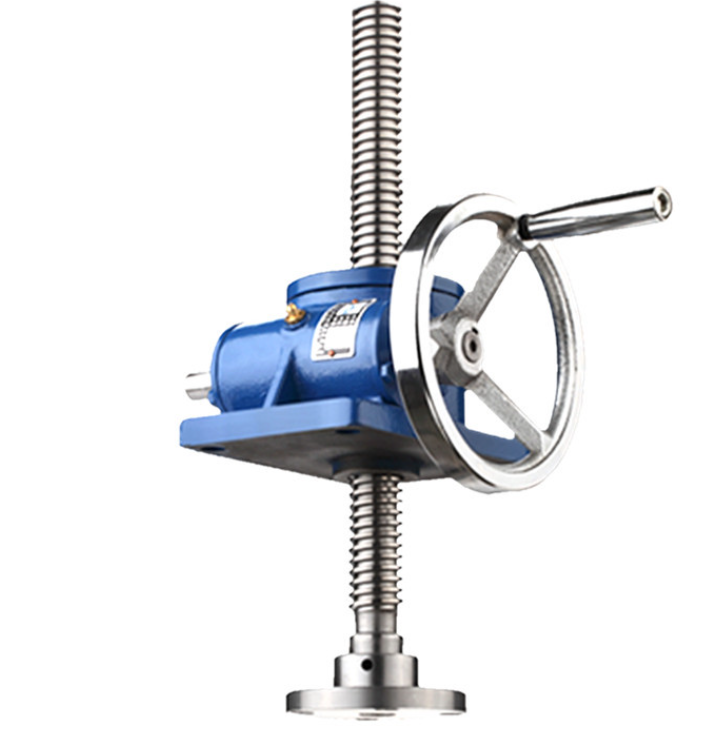Selecting a reliable motion system requires selecting an ideal screw jack. Care should be taken when making this selection based on various considerations.
Load capacity, duty cycle, horsepower, column strength, critical speed, type of guidance, brakemotor size and ball screw life are just a few considerations when designing screw jacks for applications. Informed designers take these constraints into account when selecting an appropriate size of screw jacks.
Worm Gear Screw Jacks

Worm gear screw jacks are mechanical transmission devices used to convert rotational motion into linear movement for industrial purposes. They use a worm gearbox mechanism where an alloy steel worm rotates a high strength bronze worm gear, providing continuous linear motion.
Rotation of the worm gear causes the lifting screw or traveling nut to move linearly upwards or downwards on the jack, with capacities ranging from 5kN to 2000kN. There are various designs and sizes of these devices available on the market today.
These jacks come with various ratios to provide optimal torque and travel speeds, such as N, which yields 0.25mm of travel per revolution of input shaft.
At low speeds, this makes the jack highly efficient while at higher speeds it may increase power requirements significantly.
If a jack is exposed to lateral forces, such as when moving objects horizontally across it, guide rails should be installed for its protection. Otherwise, it could quickly wear out and fail to support its load properly.
ActionJac(tm) worm gear screw jack systems offer sturdy design, load capacity, and durability in their standard models ranging from 1/4 to 100 tons of load capacity. Each system can be tailored to customer specifications for use individually or multiple screw jack arrangements.
Bevel Gear Screw Jacks
When selecting a screw Jack, it is essential to take several factors into account, including its capacity, gear set options and system tolerances.
As the first step of understanding screw jacks, one should become acquainted with both worm and bevel gear screw jacks. Worm gear jacks utilize worm gears inside their housing to move loads while bevel gear jacks utilize bevel gears instead.
Bevel gears offer greater efficiency compared to their worm gear counterparts, thanks to lower ratios that allow for higher speeds and travel rates, plus they’re self-locking, meaning they can operate at higher duty cycles than their worm counterparts
Bevel gear jacks offer greater flexibility and programmable options than their worm gear counterparts, making them suitable for a range of applications such as vibration environments, manual operation and high static loads.
Bevel gear jacks come with static capacities ranging from 7.5 tons to 100 tons and feature up to three output shafts for mounting motors, limit switches and other accessories. When used with miter gear boxes to form multi-jack systems, bevel gear jacks provide accurate positioning under heavy loads perfect for lifting, lowering and pushing applications across industries such as food, pharmaceutical, metalworking, electronics and machinery.
Ball Screw Jacks

Ball screw jacks utilize ball screws and nuts made from hardened alloy steel with bearing balls to carry loads between the nut and screw, eliminating friction between them for smooth load movement.
Ball screws offer superior efficiency and rolling action that reduce the input torque necessary to move loads by approximately one third, enabling higher duty cycles and speeds with their rolling action.
Ball screw jacks differ from their worm gear counterparts in that they require either an external locking device or brake motor to secure their position, making them more expensive but offering longer lifespan and duty cycle capacity than machine screw jacks.
Patented ball screw design offers optimal lubrication to enhance accuracy and longevity for an improved linear speed range from 0.1 to 250 mm/s with forces from 5 to 350 kN; maximum input speed 3,000r/min; duty cycle 100%.

